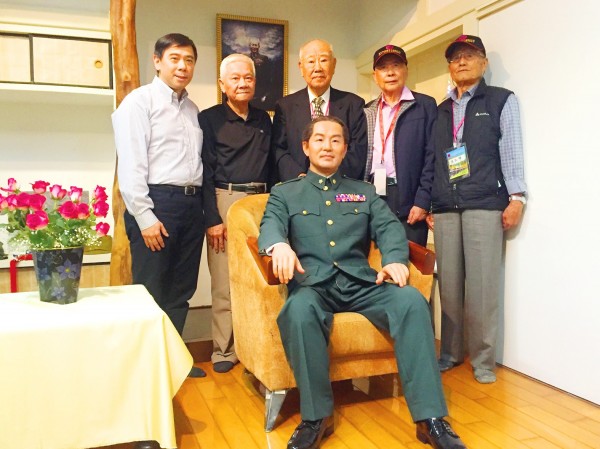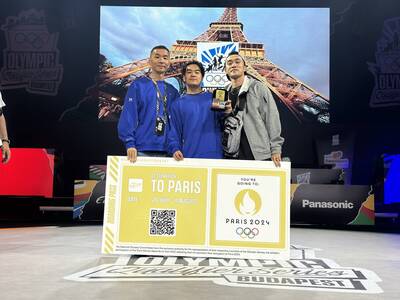《TAIPEI TIMES》 Revolutionary commander honored with wax statue

Chang Kai-feng, Shih Tsuo-hsin and Deng Hsueh-jui, former senior officers under the command of late military commander Sun Li-jen, stand with Lo Kuang-hung and his brother, Lo Kuang-jen, sons of Sun’s former military photographer, right to left, at the unveiling on Saturday at a museum in Pingtung County of a full-body wax likeness of Sun. Photo: Lo Hsin-chen, Taipei Times
By Lo Hsin-chen and William Hetherington / Staff reporter, with staff writer
A full-body wax likeness of late military commander Sun Li-jen (孫立人) was unveiled on Saturday at a museum in Pingtung County. It is the first wax statue of the celebrated commander to be made, curators said.
The likeness was commissioned by the museum at a cost of NT$400,000 and is built to scale, showing Sun in a seated position wearing his military uniform.
Sun was head of the Chinese Nationalist Party’s (KMT) elite New First Army that gained notoriety after it was responsible for the greatest number of Japanese casualties among all KMT army divisions during the Sino-Japanese War.
The museum building, originally built by the Japanese in 1937 as living quarters for the captain of the Imperial Japanese Army Air Service’s Eighth Squadron, later fell into disrepair until it was given historical status by the county government in 2002.
County officials decided to turn the building into a museum to celebrate Sun’s achievements and contributions to the nation.
Sun came to Taiwan in 1947 to train new officers to fight in the Chinese Civil War, hoping to reinforce the embattled KMT forces fighting the communists in China, and he notably drew from among Taiwan’s homeless youth for his army, housing them and offering them training in various camps throughout southern Taiwan.
Sun is said to have maintained good rapport with his officers, eating with them and marching with them through wind and rain.
Following the building’s designation as a historical site and the subsequent decision to restore it and house the museum there, four former senior officers under Sun’s command — Wang Wei-chieh (王偉傑), Shih Tsuo-hsin (時作新), Chang Kai-feng (張凱鋒) and Deng Hsueh-jui (鄧雪瑞) — each offered to donate NT$100,000 toward creating a wax likeness of Sun.
The likeness was made by craftsman Lin Chien-cheng (林健成), who sought to capture Sun’s appearance at about 50 years old, when he was army commander-in-chief.
Several former officers attended the statue’s unveiling, including Lo Kuang-jen (羅廣仁), the son of Sun’s former military photographer, Lo Chao-chun (羅超群), who shared several of his father’s photos of Sun at the ceremony.
Sun spent 33 years of his life after 1955 under house arrest in Taichung, after it was alleged that he was collaborating with the CIA to undertake a coup against then-president Chiang Kai-shek (蔣介石) and declare independence for Taiwan.
新聞來源:TAIPEI TIMES



















